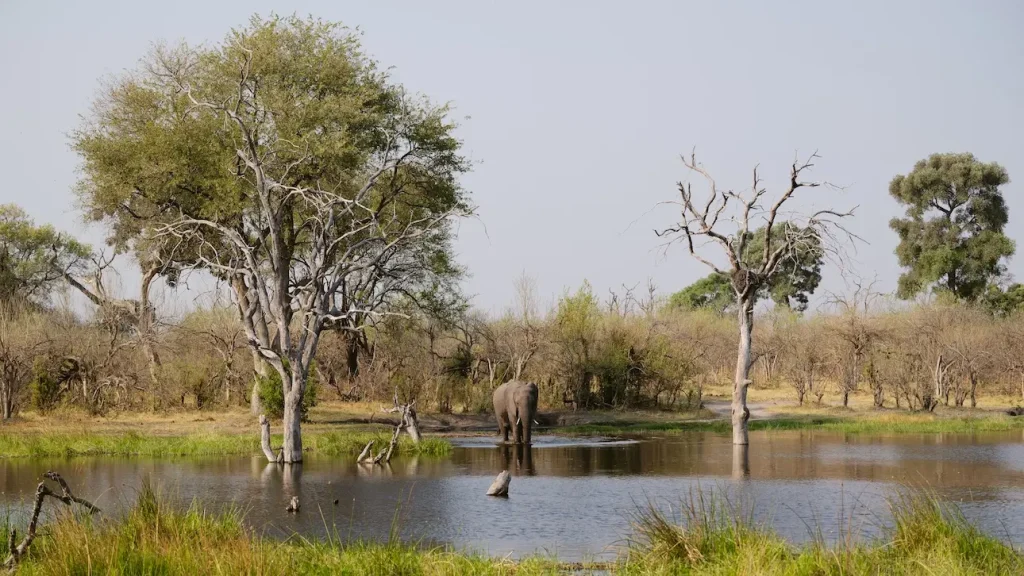- 1
- 1
- 1
- 1
- 1
- 13
- 1
- 10
- 10
- 2
- 3
- 2
- 2
- 12
- 11
- 2
- 11
- 1
- 11
- 11
- 6
- 3
- 10
- 4
- 5
- 4
- 10
- 2
- 2
Khwai
A Wild Corner of the Okavango Delta
The Khwai region lies on the eastern edge of Botswana’s Okavango Delta, one of the most extraordinary wilderness areas in the world. Defined by floodplains, river channels, mopane woodlands, and grasslands, Khwai is a safari destination where wildlife roams freely between the Okavango and the vast Chobe National Park.
For travelers who want an authentic, game-rich safari without the crowds, Khwai offers a rare combination of wilderness, variety, and exclusivity.
Why Visit Khwai?
- Outstanding Wildlife Viewing: Khwai is known for its year-round game, including elephants, lions, leopards, wild dogs, hippos, buffalo, and plains game.
- Scenic Diversity: The landscape shifts between river channels, seasonal floodplains, and dry woodlands, making game drives endlessly rewarding.
- Authentic Safari Experience: Community-run concessions and independent camps offer more flexibility than national parks, including night drives and walking safaris.
- Okavango Waterways: Traditional mokoro (dugout canoe) trips let you explore the Delta’s lagoons and channels from the water.
Wildlife in Khwai
Khwai’s position along the Khwai River makes it a magnet for animals. During the dry season, when much of northern Botswana becomes parched, wildlife congregates around the river. Massive elephant herds are a highlight, as are predators such as lions, leopards, and packs of endangered African wild dogs.
Birdlife is just as impressive, with fish eagles, herons, storks, and countless migratory species filling the skies. Whether it’s a leopard lounging in a tree, hippos snorting in the river, or elephants wading through the reeds, Khwai delivers unforgettable sightings.
Safari Activities
Unlike some national parks in Botswana, the Khwai Community Concession allows a wide range of safari activities:
- Game Drives: Both daytime and nighttime drives are possible, offering the chance to see nocturnal species like civets, genets, and owls.
- Walking Safaris: Guided bush walks bring you closer to the small details of the ecosystem and the thrill of tracking wildlife on foot.
- Mokoro Excursions: Glide silently through papyrus-lined channels on a traditional dugout canoe, a peaceful way to experience the Delta.
- Cultural Encounters: Some camps offer visits to the Khwai community, giving insight into local traditions and conservation efforts.
Where to Stay
Khwai has a range of safari camps and lodges, from classic tented camps to luxury suites overlooking the river. Many are small and intimate, ensuring a personalized experience. For those looking for romance and privacy, lodges such as Feline Fields Vintage Camp offer stylish safari tents right on the water’s edge.
Best Time to Visit Khwai
Khwai can be visited year-round, but the dry season (May to October) is especially rewarding as wildlife gathers along the Khwai River and vegetation is thinner, making animals easier to spot.
- Dry Season (May–October): Prime game viewing, cooler weather, peak safari season.
- Green Season (November–April): Lush landscapes, excellent birding, fewer visitors, and good value at lodges.
Getting to Khwai
Most visitors reach Khwai by light aircraft, flying in from Maun, Kasane, or other safari destinations. This not only saves time but offers spectacular views of the Delta from above. It’s also possible to travel by road on guided overland safaris, linking Khwai with Chobe National Park, Savuti, or Moremi Game Reserve.

